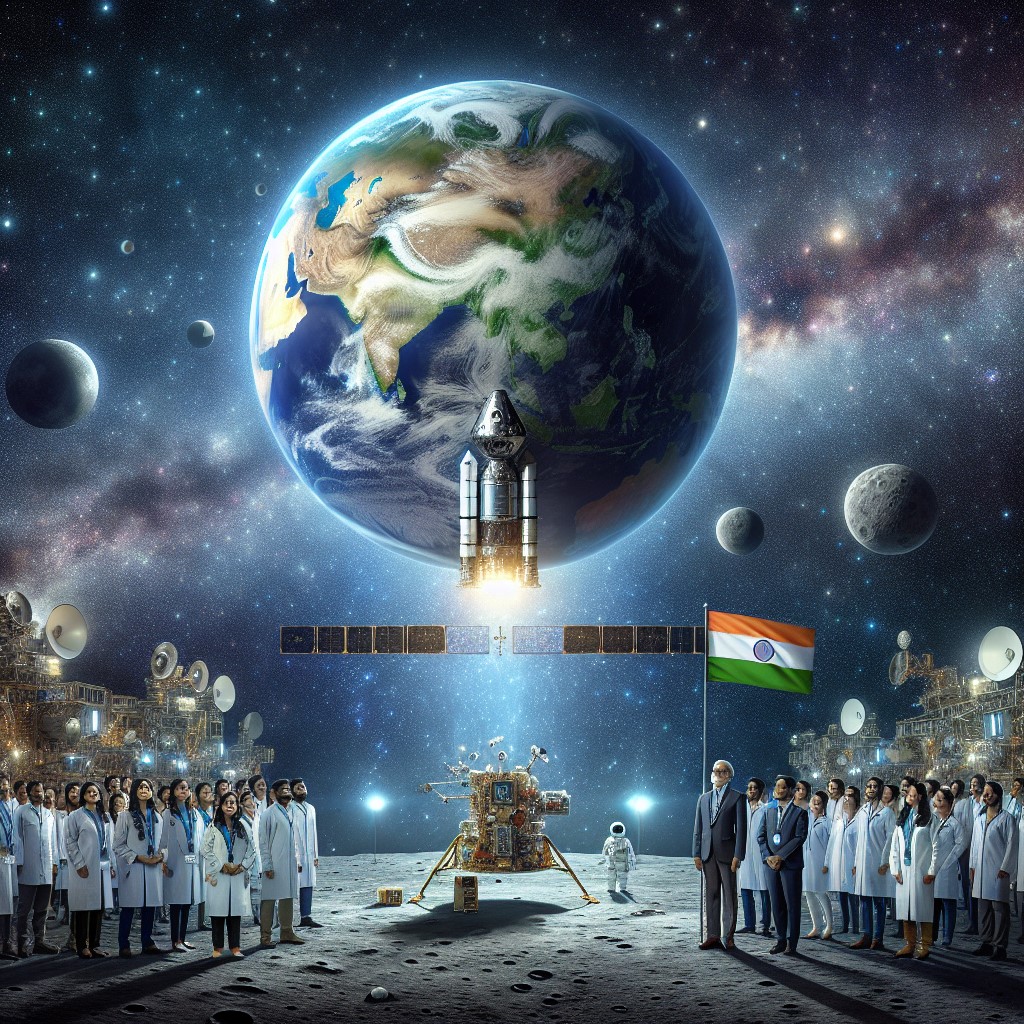In a momentous recognition of India’s prowess in space exploration, the Indian Space Research Organisation (ISRO) was conferred with the prestigious Leif Erikson Lunar Prize on December 19, 2023. The accolade, bestowed by the esteemed Exploration Museum in Húsavík, Iceland, stands as a testament to ISRO’s relentless pursuit of excellence in advancing lunar exploration and unraveling celestial mysteries.
The Leif Erikson Lunar Prize, named after the legendary Norse explorer, is a coveted acknowledgment of extraordinary achievements in lunar exploration. ISRO’s Chandrayaan-3 mission, a landmark in India’s space exploration history, received this honor for its groundbreaking efforts in lunar exploration, particularly the successful soft landing near the Moon’s South Pole on August 23, 2023.
Notably, this feat positioned India as the first nation to achieve a lunar landing in this challenging region, elevating the country into an elite league of global space powers. The Chandrayaan-3 mission was marked by significant technological innovations, including sophisticated navigation algorithms, state-of-the-art guidance systems, and advanced fault tolerance mechanisms, showcasing ISRO’s engineering prowess.
The mission’s lander, Vikram, equipped with the Chandra’s Surface Thermophysical Experiment (ChaSTE), played a pivotal role in acquiring crucial data about the Moon’s surface temperature, penetrating up to 10 centimeters below the surface. Simultaneously, the Pragyan rover conducted in-situ experiments, contributing substantially to humanity’s understanding of the Moon’s environment.
 ISRO Chairman S Somanath expressed his gratitude for the global recognition, underscoring the award’s significance in reflecting India’s ascent as a major player in space exploration. He stated, “The Leif Erikson Lunar Prize not only acknowledges ISRO’s achievements but also highlights the international community’s recognition of India’s capabilities in space exploration.”
ISRO Chairman S Somanath expressed his gratitude for the global recognition, underscoring the award’s significance in reflecting India’s ascent as a major player in space exploration. He stated, “The Leif Erikson Lunar Prize not only acknowledges ISRO’s achievements but also highlights the international community’s recognition of India’s capabilities in space exploration.”
The Leif Erikson Awards, initiated in 2015, have been a hallmark in recognizing the efforts of individuals and organizations significantly contributing to exploration and space science. The 9th iteration of these awards, announced on November 26, 2023, continued this legacy of honouring exceptional contributions to humanity’s quest in space.
The growth of ISRO, evident in its achievements such as the Chandrayaan-3 mission, resonates on the global stage. Comparatively, ISRO’s strides in space exploration stand tall among other space organizations, showcasing India’s commitment to pushing the boundaries of scientific exploration.
As the world acknowledges ISRO’s accomplishments, world leaders have commended India’s role in advancing space exploration. “ISRO’s Chandrayaan-3 mission is a remarkable demonstration of India’s technological prowess and its commitment to contributing to our understanding of the universe. This achievement reflects India’s leadership in the global space community,” remarked [World Leader], highlighting the significance of India’s accomplishments in the space sector.
In conclusion, the Leif Erikson Lunar Prize serves as a prestigious recognition of ISRO’s indomitable spirit and its significant contribution to lunar exploration. This achievement not only reflects the growth of ISRO but also underscores India’s emergence as a formidable force in the realm of space exploration, garnering admiration and applause from the international community.
